Effective Hiring Offer Letter Template for Employers
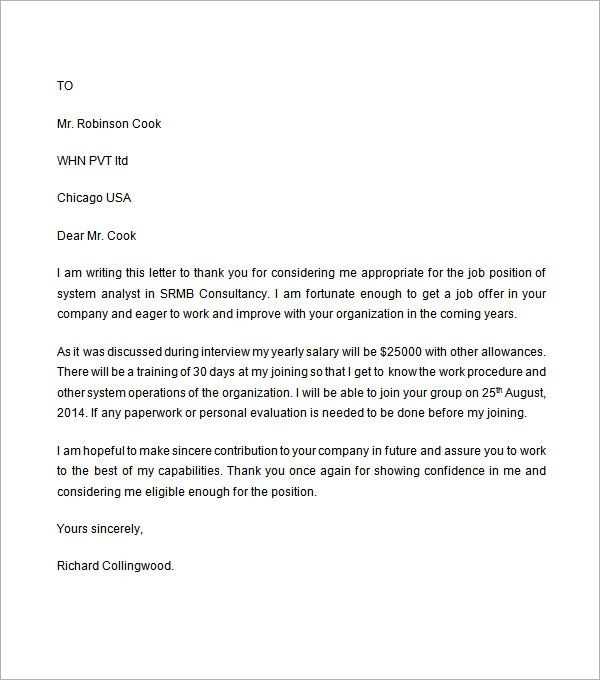
When extending a job opportunity to a potential employee, it’s essential to provide clear, formal communication regarding the terms and expectations. A well-constructed document outlining these details can set the tone for a positive working relationship. It serves as a critical tool to confirm mutual agreement between both parties.
Clarity and precision are key when drafting such a document. It’s important to clearly convey the role, compensation, and other significant terms, ensuring the recipient understands all aspects before accepting the position. A properly worded document can prevent confusion and establish trust from the outset.
Crafting this communication carefully can leave a lasting impression on the new recruit and can ultimately influence their decision to join your team. By incorporating the right language and structure, you ensure professionalism and transparency throughout the hiring process.
Importance of a Job Confirmation Document
Providing a formal written agreement is a crucial step in establishing a professional relationship with a new team member. It ensures that both parties have a clear understanding of the role, expectations, and terms of employment. This document serves as a reference point to avoid misunderstandings and disputes in the future.
Clear communication is the foundation of any successful employment arrangement. By outlining essential details such as salary, responsibilities, benefits, and start date, the document provides transparency and security. It also protects both the employer and the employee, making expectations clear from the start.
Legal validity is another important aspect of a well-structured agreement. A written confirmation not only serves as a professional courtesy but also ensures compliance with relevant labor laws. It strengthens the commitment of both parties and provides legal protection should any issues arise later in the employment relationship.
Key Elements to Include in an Offer
When extending a formal job proposal, it is essential to include critical details that ensure both parties are fully informed and aligned. These elements help clarify expectations and create a foundation for a smooth transition into the new role.
Core Information to Address
- Position Title – Clearly state the job title to avoid ambiguity.
- Start Date – Specify when the employee is expected to begin their duties.
- Compensation Details – Include salary, bonuses, and other financial incentives.
- Work Schedule – Define the work hours, including any flexibility or remote work options.
- Benefits – List benefits such as health insurance, vacation days, and retirement plans.
Additional Considerations
- Probation Period – Mention if there is a trial period and its duration.
- Reporting Structure – Clarify the supervisor or team the new employee will report to.
- Job Location – Specify the primary office or work site.
- Confidentiality and Non-Compete Agreements – Include any legal clauses relevant to intellectual property and competition.
How to Customize Your Job Confirmation Document
Tailoring a job proposal to suit the specifics of your company and the candidate is essential for creating a personalized and professional experience. Customization not only makes the document more relevant but also strengthens the relationship between the employer and the employee.
Adjusting the Content for Individual Roles
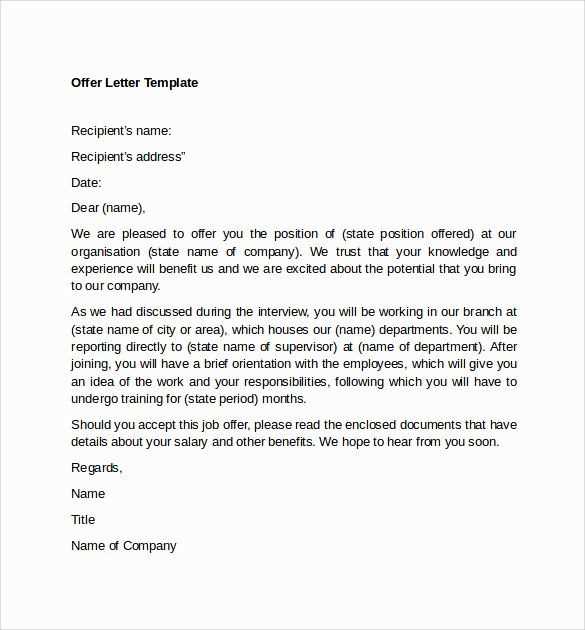
Each position comes with its own set of requirements and expectations. Ensure the document reflects the unique aspects of the job by including role-specific details such as duties, expectations, and any special conditions that may apply. This helps the new recruit understand exactly what is required of them.
Personalizing the Tone and Language
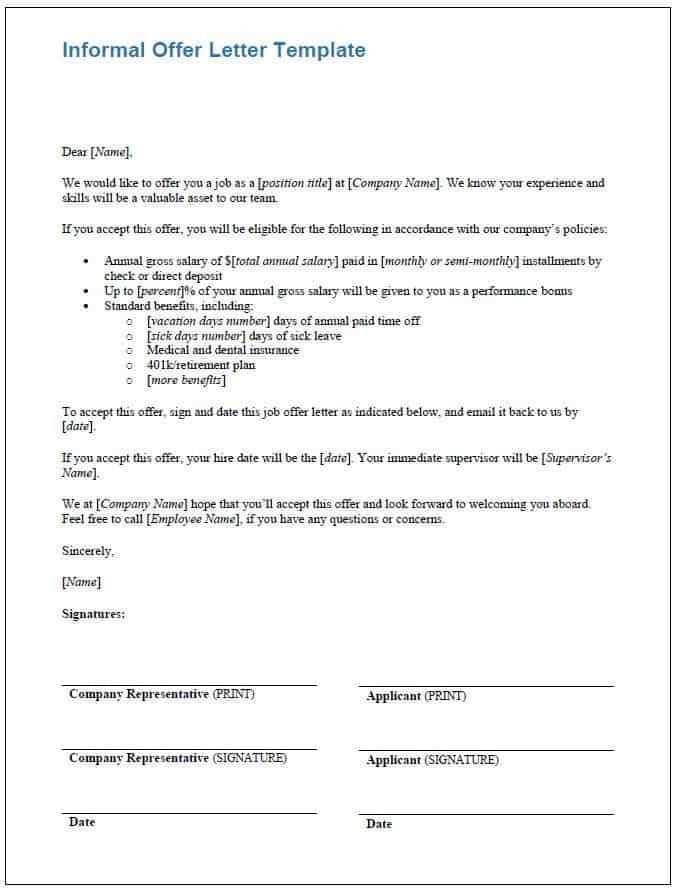
The tone of the document should reflect your company culture. A formal tone may be appropriate for more traditional industries, while a friendlier, conversational tone might suit creative or start-up environments. Customizing the language ensures the proposal feels welcoming and aligned with your workplace atmosphere.
Legal Considerations in Job Proposals
When drafting a formal proposal for a new employee, it’s important to ensure that the document complies with relevant laws and regulations. Failure to include legally required clauses or failing to follow proper protocols can lead to disputes or legal issues later in the employment process.
Compliance with Labor Laws
Understanding labor laws is crucial for both employers and employees. Ensure that all terms and conditions outlined in the document adhere to national and local employment regulations, including minimum wage laws, non-discrimination policies, and working hour restrictions. This protects the employer from potential lawsuits and ensures fair treatment of employees.
Incorporating Legal Clauses
Important legal clauses, such as confidentiality agreements, non-compete provisions, and intellectual property rights, should be included if applicable. These clauses help safeguard the interests of the company and prevent conflicts of interest. Be transparent with candidates about any legal obligations they may have once they accept the position.
Best Practices for Professional Tone
Maintaining a professional tone in any formal communication is essential for creating a positive and respectful impression. The language should reflect both the seriousness of the job and the professionalism of the company, while still being welcoming and clear.
Key Elements of Professional Communication
| Element | Explanation |
|---|---|
| Clarity | Ensure that the language is straightforward and free of ambiguity, avoiding overly complex sentences or jargon. |
| Politeness | Use courteous language, expressing appreciation for the candidate’s time and effort in applying for the position. |
| Formality | Adopt a tone that is formal yet not overly rigid, maintaining respect and professionalism throughout the document. |
Avoiding Common Pitfalls
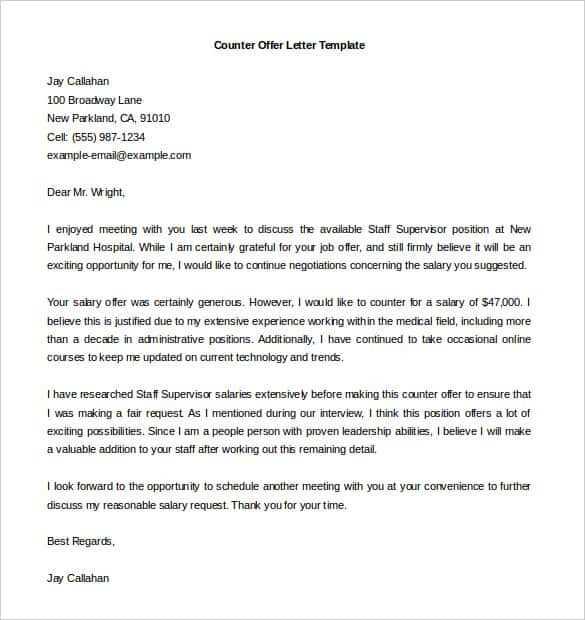
- Avoid Over-familiarity: While being friendly is important, avoid using overly casual language or terms that might undermine the professionalism of the communication.
- Be Concise: Keep the message to the point, highlighting the essential information without unnecessary elaboration or lengthy explanations.
Common Mistakes to Avoid in Job Confirmation Documents
When drafting a formal job proposal, it’s easy to overlook key details that can lead to confusion or miscommunication. Ensuring the document is clear, accurate, and legally sound is essential to avoiding common pitfalls that can create issues for both the employer and the candidate.
Frequent Errors to Watch Out For
- Ambiguous Job Responsibilities: Avoid unclear descriptions of the role or expectations. Be specific about duties to prevent confusion later on.
- Inaccurate Compensation Information: Double-check salary figures and benefit details to ensure they are correct before sending the proposal.
- Overlooking Legal Requirements: Failing to include essential legal clauses such as non-disclosure agreements or compliance terms can lead to legal complications.
- Failure to Personalize: A generic document that doesn’t acknowledge the individual may come across as impersonal and less engaging.
How to Prevent These Mistakes
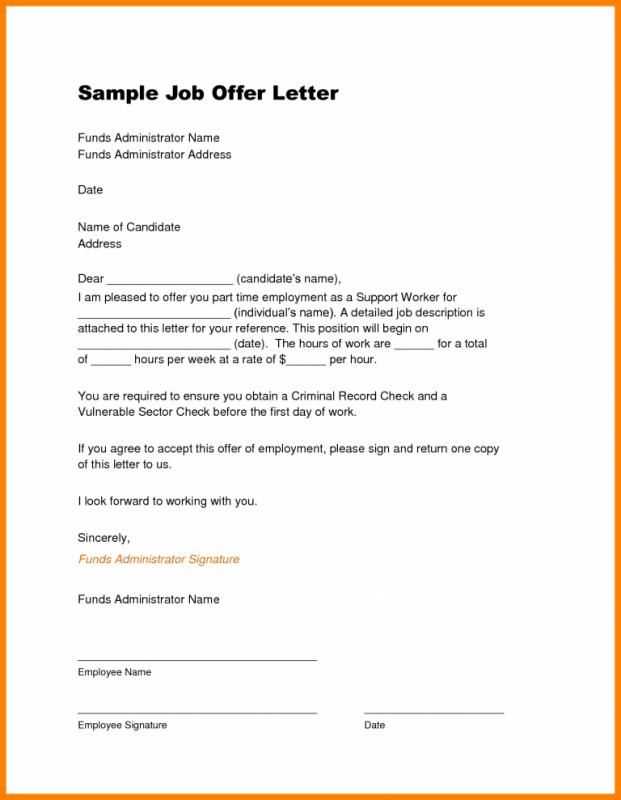
- Proofreading: Always review the document carefully to ensure that all information is accurate and free from errors.
- Clear Formatting: Use clear and consistent formatting to help the recipient easily understand the details and structure of the proposal.
Tips for Sending and Following Up
When sending a formal proposal for a new job role, the method and timing of communication are just as important as the content. It’s essential to ensure that the message reaches the recipient in a timely and professional manner, and following up appropriately ensures a smooth transition to the next steps.
Firstly, choose the right communication channel for sending the proposal. Email is often the most effective, but in some cases, physical delivery or a phone call might be necessary. Always confirm receipt, and allow the recipient time to review the details before expecting a response. Once sufficient time has passed, a polite follow-up message can help confirm their decision and move the process forward.
Finally, make sure your follow-up message is respectful and professional. Keep the tone cordial, acknowledge the recipient’s time, and offer any assistance they might need. A well-timed follow-up not only shows professionalism but also reinforces your interest in the candidate joining your team.